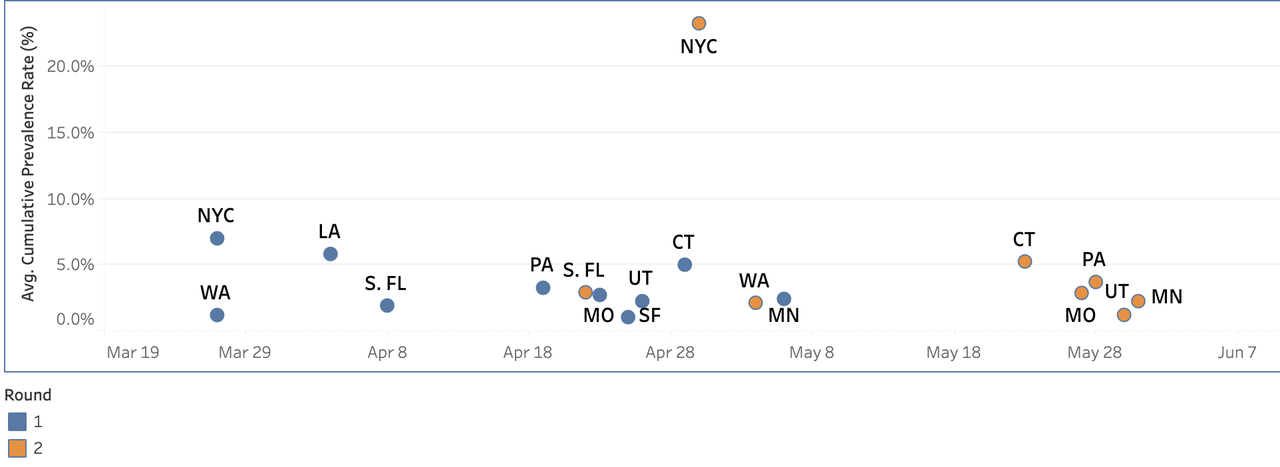By Tyler Durden
As scientists get a better grasp on the coronavirus and how it has spread across the US, a new survey from the CDC purports to show that the true number of coronavirus cases is between 2x and 13x the official count, varying from state to state.
Following a similar finding by scientists in Sweden, the researchers working with the CDC found that even the hardest-hit area in the study – ie NYC, where 1 in 4 people have been exposed according to antibody surveillance studies – isn’t anywhere near achieve herd immunity, which scientists believe will require 60% infection rate.

If these seroprevalence rates are accurate, then Missouri is suffering from an outbreak that is 13x its reported rate.
The analysis, based on antibody tests, is the largest of its kind to date, and the full breakdown has been released after some surveillance numbers focusing on limited areas were released last month.
Media orgs like the FT, NYT and Washington Post started trying to gauge the number of unconfirmed cases and deaths by calculating the “excess fatality” rate, measure the average deaths during equivalent time periods from the past 5 years vs. the numbers from this year.
On the other hand, the data illustrate how large swaths of the US remain relatively untouched by the virus. Parts of Utah have just over 1% exposure rates, while Minneapolis-St. Paul’s rate is 2.2%.
Nearly 40% of infected people reportedly never develop symptoms, but they can still pass the virus along (though the exact risk factors here are still under investigation) The US now tests roughly 700,000 people a day, per the NYT.
“These data continue to show that the number of people who have been infected with the virus that causes Covid-19 far exceeds the number of reported cases,” said Dr. Fiona Havers, the C.D.C. researcher who led the study. “Many of these people likely had no symptoms or mild illness and may have had no idea that they were infected.”
Dr. Havers emphasized that even those who do not know their infection status should wear cloth face coverings, practice social distancing and wash their hands frequently.
In some areas, like NYC, the gap between the true number of cases (according to CDC estimates) and the number confirmed improved as testing capacity expanded.
In some regions, the gap between estimated infections and reported cases decreased as testing capacity and reporting improved. New York City, for example, showed a 12-fold difference between actual infections and the reported rate in early April, and a 10-fold difference in early May.
“This is not coming as a shock or surprise to epidemiologists,” Carl Bergstrom, an infectious diseases expert at the University of Washington in Seattle, said in an email. “All along, we have expected that only about 10 percent of the cases will be reported.”
Tracking the numbers over time can provide useful insights into the virus’ spread and about a region’s capacity to cope with the epidemic, other experts said.
“The fact that they’re sort of marking it out over time and looking at it over a longer duration will actually be super-informative,” said Dr. Rochelle Walensky, a researcher at Harvard University who wrote an editorial accompanying the JAMA paper.
Like most studies, the CDC data aren’t perfect. For example, critics have warned that samples analyzed by the researchers might overrepresent the presence of COVID since only the most ill people, who might not be representative of the general population.


